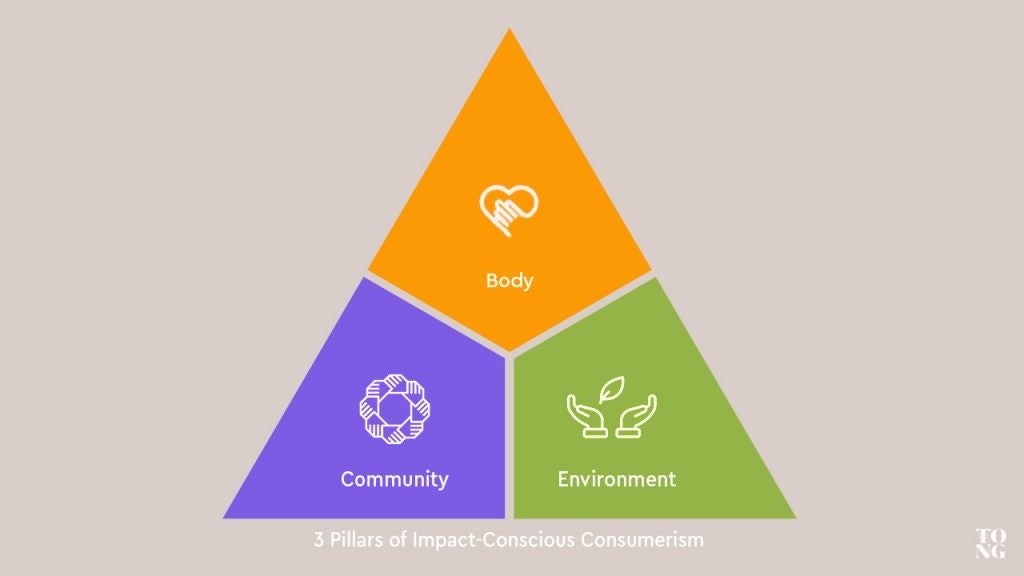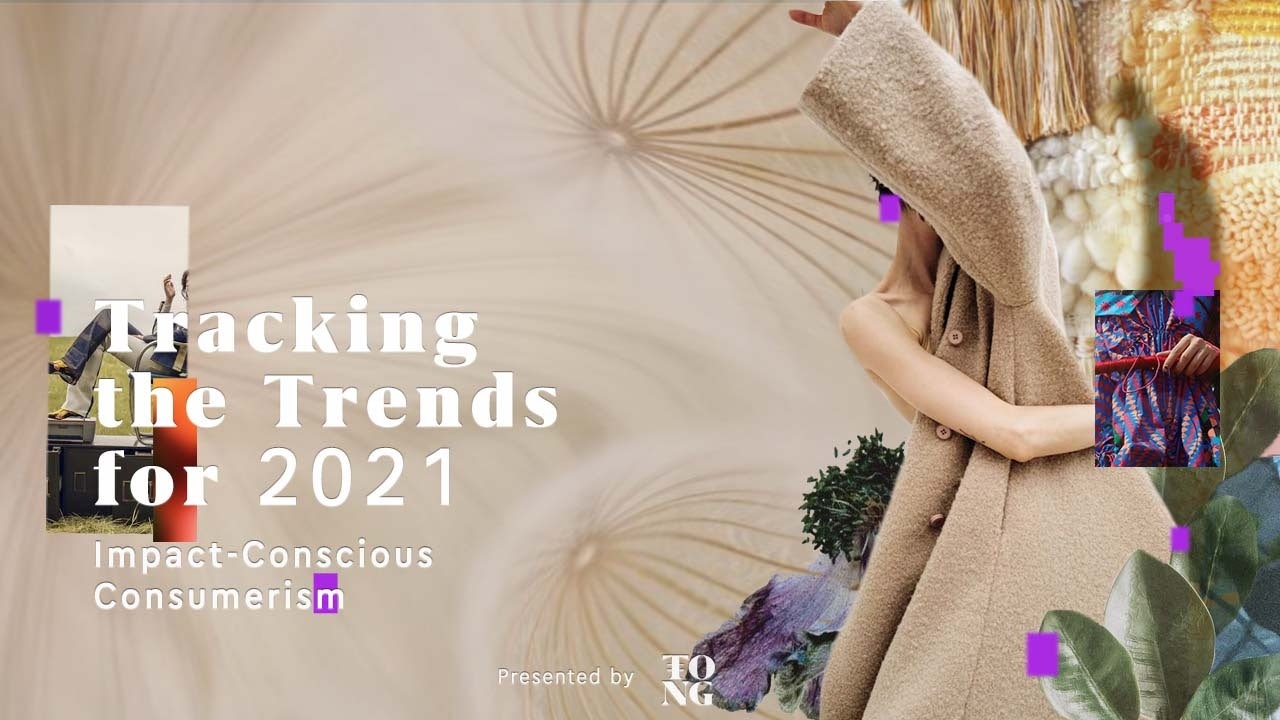In
Tracking the Trends for 2021#
, Jing Daily partners with the cross cultural agency
TONG#
to analyze four key insights for the coming year. Pulling expertise from Jing Group’s network of leading B2B publications, the four-part series covers consumer insights luxury players must be aware of to survive post-COVID China. To start, we dive into the rise of China’s impact-conscious consumer.
Key Takeaways:#
- In China, emotional responses to COVID-19 are being manifested in a number of areas, primarily: the body, community, and the environment. Together, this set of interests forms the rise of a new, impact-conscious consumer in the mainland.
- Body positivity has been heightened during the outbreak, and some local brands have been particularly instrumental in promoting positive body messages and growing the area of diversity in casting. Advocacy groups and students are working towards ending the stigma of menstruation.
- Following COVID-19 there was a global outpouring of help for the citizens of Wuhan. From big donations to small messages, brands crafted purposeful and caring messages for fans. Tech giants too were proactive and responsive, which illustrated a more compassionate approach to the community.
- From governmental initiatives to local start-ups, environmental issues are top of mind among younger generations. Citizens are now more concerned with animal welfare as the rise of the “cat economy” chimes with grassroots organizations such as the fur-free movement ActAsia.
Despite China’s relatively quick recovery from the outbreak, the upheaval of life in the wake of COVID-19 has given companies, governments, and citizens — particularly the young generations — an opportunity to rethink processes, practices, and social interactions.
As a result, 2020 has shifted priorities. In China, we are seeing emotional responses to the crisis manifested in a number of areas, primarily: the body, community issues, and the environment. Together, this set of interests forms the rise of a new, impact-conscious consumer.
Furthermore, this shift is aided by a number of developments. Better education, increased communication, and connectivity on social media, and attention from KOLS are all catalyzing this drift toward impact-consumerism. The proliferation of tech startups, apps, and platforms are facilitating change as well.
Whether it’s on the ground coalitions like ActAsia or Weibo’s online charity organization, farm to table startups like Meicai, or innovation in fashion sustainability promoted by companies like Redress and Cheng Kung Garments, China is witnessing a rise in mindfulness.
This more considered outlook is being driven by demand from Millennial and Gen Z demographics. But will 2021 be the year mainstream consumers become more receptive to inclusivity, freedom for expression, and compassion? In association with TONG, Jing Daily analyzes the three pillars of impact-conscious consumerism.

Body: Care for What’s In and What’s On#
Young shoppers are now keen to generate a sense of self-awareness through heightened care for health and optimized bodies, as well as supporting brands that rally around certain beliefs and purposes. Body positivity has been heightened during the outbreak, and some Chinese brands have been instrumental in promoting positive body messages and diversity.
Intimate wear company Neiwai has been particularly dynamic in this area from hiring an older female ambassador to releasing inclusive campaigns that have featured same-sex couples. Their choice of wording too is particularly upbeat, yielding phrases like “fits a variety of chest sizes” and “comfortable.”
Yang Tianzhen, the former manager of Chinese celebrity and member of K-pop boy band Luhan, has now become an internet celebrity herself for founding plus-size label, PlusMall. Yang now advocates for body acceptance, positivity, and representation, and has appeared on the cover of Nylon China. Weibo influencer Lizlu has too found interest online by offering style tips for plus size women.
Previously, brands that have tried to meet this changing “demand” have been out of step. Some have found themselves accused either of “ethics-washing” or of being too progressive, as in the case of Tiffany.
But an area where we are seeing real, authentic transparency on a grassroots level is in relation to women’s issues and females products. The advocacy group “Stand By Her” inspired students to put a stop to period-shaming by offering free sanitary pad dispensers in toilets, which have now been rolled out to over 250 colleges across China.
According to Jenny Zhang, Strategy Director at TONG, it’s not surprising that younger consumers are committed to this area. “Age is definitely a factor in changing consumption in Femcare across China. Younger women have a different attitude toward personal care and feminine hygiene than previous generations. They are active, more open-minded and engaged with these topics,” she explained.
During the early months of the COVID-19 outbreak, female health workers were told sanitary products were not critical items; however, a local NGO rallied to have donations of sanitary pads and period underwear sent to frontline health workers.
"Age is definitely a factor in changing consumption in Femcare across China. Younger women have a different attitude toward personal care and feminine hygiene than previous generations."
Zhang pointed to a brand like LUÜNA Naturals 裸月 which is now gaining traction by breaking the stigma surrounding periods in China. “LUÜNA Naturals’ healthy and planet-friendly products and women-first mantra are responsive to consumer demand for real voices and social impact.”
Alongside breaking down barriers to perceptions of body issues, citizens are more careful about what goes into their bodies as well. The thirst for fresh food products has risen while concepts like “farm-to-table” have started to infiltrate consumption trends. This has gone hand in hand with tech developments and speedy delivery apps.
iiMedia Consulting reported that during the two weeks from January 22 to February 6, 2020, the daily new users of mainstream fresh food platforms were more than 10,000. Among them, Hema, JD Daojia, and Dingdong Maicai had more than 40,000 new users on February 6.
The Bottom Line:#
Together, the rise in body acceptance, healthy living, and body-related causes indicate that mindful and considered change is happening. Brands that wish to empower consumers need to ensure an authentic and long-standing alignment with such areas.
Community: Standing With Wuhan Becomes the Norm#
One of the most notable issues to result from COVID-19 was the initial outpouring of help for the citizens of Wuhan. Influencer Li Jiaqi was particulary active here; during a special livestream on the eve of Chinese New Year, instead of selling, he asked viewers to make donations, raising a total of almost $11 million for Wuhan.
From big donations to small messages, brands chose to be sensitive to their consumers during this crisis rather than push out promotional messages. Global fashion names pledged millions to the city while at home, Chinese brands crafted purposeful and caring messages for fans.
Beauty disruptor Perfect Diary broadcast safety recommendations, while Neiwai posted messages reminding their fans to stay healthy and strong on WeChat. Apparel line Bosideng donated 150,000 down jackets worth $45.7 million to counter the cold weather faced by frontline workers.
Tech giants too were proactive and responsive during the crisis. Efforts included blocking vendors from increasing PPE prices or deploying drones to enforce the curfew. Despite this, some attitudes toward these companies shifted. Netizens on WeChat and Weibo have started to speak up to highlight the social unfairness of having access to a phone.
Incidents in which older people without smartphones are unable to access health codes are now being reported on. In August, one of these incidents concerning an elderly Harbin resident unable to scan his health code received 220 million views on Weibo. It featured compassionate comments such as: “Society really has to accommodate old people's needs.”
The Bottom Line:#
From small and discreet, to large scale, these outpourings from brands during COVID-19’s outbreak further reinforce the analysis that consumers in China are thinking laterally about causes and moments that relate to inclusivity of community thinking.
Environment: Sustainability, Tech, and Animal Welfare#
Recently, China’s governmental policies have been leaning toward a greater appreciation of environmental issues. It announced a ban on single-use plastics earlier this year which set the tone for a green recovery from COVID-19, including a commitment to carbon neutralization by 2060.
These steps have been complemented by initiatives from big tech conglomerates such as Cainiao’s Recycling Day. Additionally, the sustainable impact of fashion and a demand for more ethical production has been a driver in China’s consumption during 2020.
During October, Shanghai Fashion Week held its third annual sustainability conference in collaboration with the Copenhagen Fashion Summit. Luxury retailers too have been addressing recycling and packaging: The Balancing and Lane Crawford have both pioneered sustainable packaging and recycling initiatives.
The Alibaba Group committed to making 2020’s Singles’ Day more sustainable and set up 40,000 recycling stations; for every box recycled, consumers scanned a QR code to receive points on Alipay’s Mini Program, Ant Forest. By the end of the festival, more than 200 million people had participated in the 11.11 Go Green campaign.
Finally, on this trend, younger consumers are also more concerned with animal welfare. The rise of the “cat economy” is chiming with grassroots organizations such as the fur-free movement ActAsia, which has been vital in pushing for a future that’s much more humane.
"Since COVID-19, Wuhan has ended wild animal consumption, dog farming has been banned, and lawmakers have been calling for an expansion in wildlife protection."
ActAsia’s 6th Compassion in Fashion Forum at the Fashion Zoo festival addressed a live audience and reached an additional audience of around 24,000 listeners online. The forum also featured luxury’s leading cruelty-free name, Stella McCartney. Zhang noted that the COVID-19 outbreak had a huge impact on how China approaches animal welfare.
“Since COVID-19, Wuhan has ended wild animal consumption, dog farming has been banned, and lawmakers have been calling for an expansion in wildlife protection. Alongside this, younger consumers are becoming increasingly aware and vocal on animal welfare issues,” Zhang told Jing Daily.
This shift is also being reflected in governmental change and legislation, too. Zhang continued: “In July, China announced to finally remove mandatory pre-market animal testing for foreign ordinary cosmetics effective January 2021. This indicates a move toward a more humane approach to safety testing and a step closer to cruelty-free beauty.”
The Bottom Line:#
The final pillar, a recalibration on the wellbeing of the environment, is perhaps the most crucial. In China, this is coming from the top down and bottom-up, and as such, is having a powerful impact across the country.
While it’s true that this more thoughtful way of living has been accelerated by COVID-19, it was already fermenting in consumers’ consciousness. Now, it is funneling Gen Z’s attention toward greater self-awareness, meaningful interactions, and environmental considerations.
China exited the COVID-19 pandemic relatively quickly comparative to global standards, and as such, its consumers’ spend and attention have been even more vital to fashion brands and companies. Ultimately, the combined purchasing power of younger Chinese consumers is one that brands cannot ignore in this decade.
Only the brands that are able to demonstrate an authentic connection to causes, or can genuinely build goodwill, will win favor during 2021.
